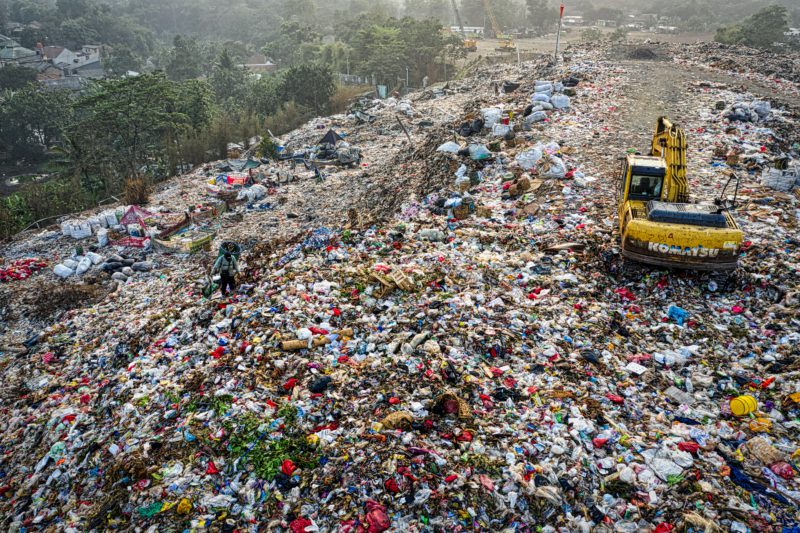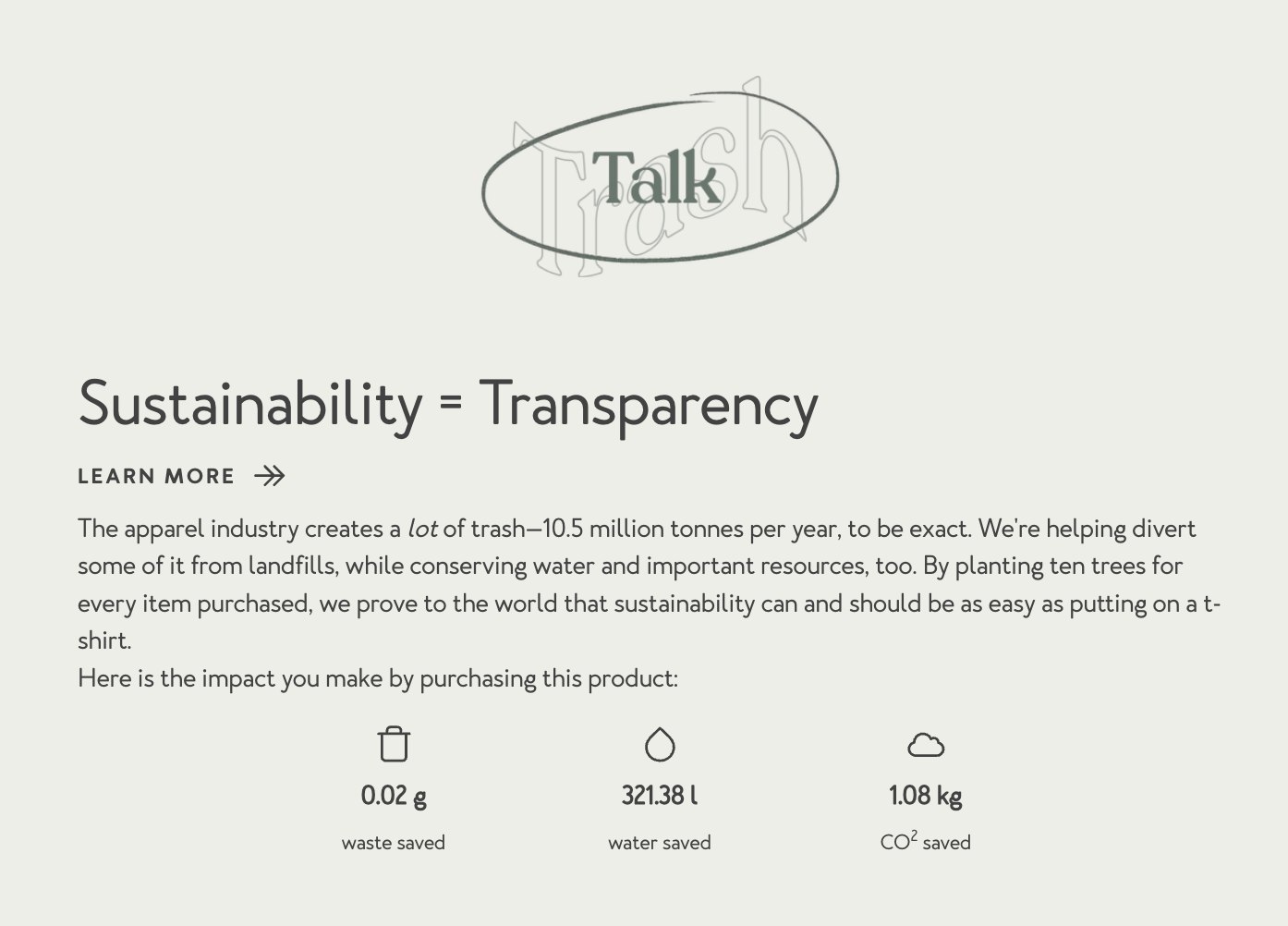Fast fashion is a trend that’s taking over our closets and slowly degrading our planet. We might know it isn’t the most sustainable way to shop and there are some environmental consequences, but sometimes it’s easy to fall for a great deal or a trendy look.
In this article, we’ll explore what makes fast fashion so unsustainable as well as some steps you can take towards creating an eco-friendly wardrobe.
What is fast fashion?
Fast fashion is a term used to describe clothing produced and distributed at a low cost, at an extremely fast pace, and usually with a focus on trends. Think of brands like Shien, H&M, and Zara that make the latest celebrity and catwalk trends available at a fraction of the cost.

Fast fashion aims to get designs into customers’ hands as quickly as possible before they inevitably go out of style. As a result, these brands produce about 52 “micro-seasons” a year — or one new “collection” every week.
Why is it bad?
While there’s an undeniable allure in instantly snagging a celebrity look you saw on Instagram, or buying a trendy dress for $15, fast fashion has a lot of severe implications for both people and planet.
Fast fashion exploits workers.
Fast fashion is often associated with poor working conditions and exploitative labour practices. Many brands take advantage of cheap workforces in countries where labour laws fail to protect workers’ rights or health and safety standards. It’s estimated that the fast fashion industry employs approximately 75 million factory workers worldwide, and of those workers, less than 2% make a living wage.
In addition to exploitative wages, unsafe and dangerous working conditions have detrimental impacts on workers’ physical and mental health. Oftentimes these factories avoid building codes, regulations or inspections in favour of profit, creating structurally unsafe workplaces. This means both immediate physical danger to workers, as well as ongoing exposure to toxic chemicals.

Fast fashion pollutes our planet.
After the oil industry, the fashion industry is the second-largest polluter on Earth. Fast fashion is at the core of the problem, as the pressure to produce clothes cheaply and as fast as possible leads to severe environmental degradation.
Excessive use of chemicals
- Every step in the production process involves chemicals, from dyeing fabrics to washing them after they’re finished. In countries without strict environmental regulations, these chemicals are often used in excess (and at the expense of workers), then dumped into rivers, lakes, and oceans. The accumulation of toxins poses a serious risk for aquatic plants and animals, and pollutes essential drinking water for surrounding communities.
Non-biodegradable materials
- To keep costs low, fast fashion also relies heavily on cheap materials that harm the environment. Polyester, which is partially derived from petroleum, is one of the worst offenders. Inexpensive and easily attained, polyester fabrics can’t be recycled, aren’t biodegradable and add tiny plastic particles to our oceans and waterways through micro shredding when washed.
Unsustainable use of land and resources
- At the scale that fast fashion produces clothing, even natural fibres like cotton bear negative environmental implications. Conventional cotton farming uses staggering amounts of water and chemicals that degrade soil quality, pollute natural water resources and damage the surrounding environment.
Excess consumption
- Fast fashion also encourages consumers to buy more clothes by lowering prices so much that shoppers don’t hesitate to buy something they’ll only wear once (or twice). Worldwide, 80 billion pieces of clothing are consumed every year. That’s a 400% increase from only twenty years ago. However, approximately 85% of these textiles end up in landfills every year.

How to spot fast fashion
It’s hard to look away once you see fast fashion for what it really is. It’s clear the system needs to change, and the way we consume and wear clothing needs to change with it. By making the most of the clothing already in your closet, buying second hand and investing in quality pieces made by trustworthy brands, you’re contributing to a more sustainable fast fashion-free future.
When working to transition fast fashion out of your wardrobe, look out for brands that:
Sell thousands of styles that touch on the latest trends
- At tentree, not only do we plant ten trees for every purchase, we create our designs with longevity in mind. What is “in” must go out when it comes to fast fashion. So to ensure you’re never out of style, our clothing is timeless and versatile, transitioning effortlessly between seasons and standing the test of time as staple pieces in your closet year after year.

Featured: The Women’s Relaxed Cropped T-Shirt paired with the Hemp Stretch Pacific Jogger + Unisex Willow Longsleeve T-Shirt
Sell clothing made of cheap, low-quality materials (that usually fall apart after just a few wears)
- We’ve committed to finding and sourcing the most sustainable fibres and materials available. It’s not only our responsibility to ensure we leave the smallest impact on our environment, but we also take great pride in finding better, healthier, and more eco-progressive solutions for our customers. In our collection, you’ll find eco-friendly and sustainably sourced materials like hemp, linen, organic cotton, and TENCEL™ fibres made from wood pulp, just to name a few.
Lack of transparency when it comes to their manufacturing processes and working conditions
- Each and every one of our products is made in a safe and respectful work environment. As a certified B Corporation, we hold our production facilities to the highest ethical labour standards. Our partner factories are regularly audited to ensure compliance with the tentree Code of Conduct and International Labour Standards. We also ensure workers are properly compensated with fair wages, ensuring proper rest days and access to essential insurance coverage.
- Our Eco-Log (visible on each product page) also makes it easy to see the environmental impact of each piece you buy. We compare ourselves against the industry standard and show you the amount of water, carbon dioxide, and waste we saved, so you can confidently make an eco-friendly purchase. Plus we plant ten trees, for every item you purchase.

What you can do
In addition to learning how to spot and avoid fast fashion brands, we thought it’d be helpful to share some tips we like to keep in mind when it comes to ensuring we’re minimizing our wardrobe’s environmental impact as a whole.
Buy less
- The easiest way to fight fashion and the environmental implications is simply buying less. Try styling what you already own in a new way to make it more versatile, and mindfully question any new purchases.
Explore sustainable brands
- When the time comes to purchase new clothing, do your research. Look for brands that have sustainable and ethical manufacturing standards and are ideally working to improve the state of our planet, not just do less harm. Check out our guide to greenwashing to learn how to evaluate brands’ sustainability claims and make a planet-friendly purchase.
Buy quality clothing
- Choosing sustainable brands lets you invest in better-quality clothing and materials. This investment means pieces will last longer, keeping them in your closet and out of landfills.
Follow care instructions
- After taking the initial step of investing in sustainable clothing, the next step is to care for them properly. Following care instructions and keeping simple tricks in mind, such as washing only when necessary, all help extend the lifespan of your clothes.
Think twice before throwing out clothes
- Always try to wear your clothing until it’s worn out. If a piece of clothing is ripped or in disrepair, see if you can mend it. If it’s beyond repair or no longer a fit for your wardrobe, check out Circularity by tentree before throwing anything away. This first-of-its-kind program integrates clothing resale and recycling, giving our items a second life through our consignment site or responsibly recycling them, ensuring none of our products add to landfill waste.
Buy second hand
- Before buying new, consider looking for second-hand options.
As a consumer, you have the power to vote with your dollars. By consciously shopping and choosing brands that work to promote ethical labour practices and sustainable development, we can create change, one purchase at a time.
Keep Reading
4 Tips For Sustainably Updating Your Wardrobe
By planting ten trees for every item you purchase, it’s our mission to plant 1 billion trees by 2030. Head to our website to learn more and get 10% off your next purchase.

